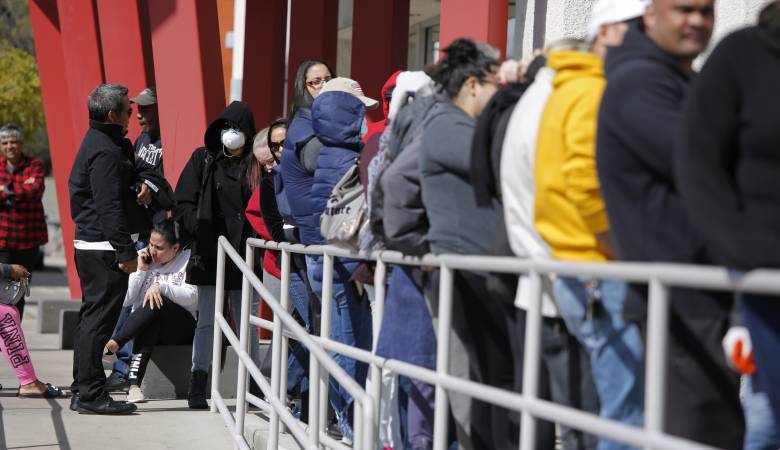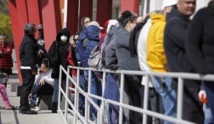The data shows a somewhat slowing pace of job losses, though layoffs are expected to continue as the lockdowns extend into their second month.
Prior to the pandemic, there were more than 153 million people employed in the US, and unemployment was at record lows.
US President Donald Trump is due to announce guidelines on reopening the economy later in the day, as he pushes to bring business back to normal as quickly as possible. He has said that some states may open up even before May 1.
There are persistent worries that the lack of coronavirus testing capacity will hinder a quick reopening, both due to concerns over resurgent outbreaks and because people will lack confidence to resume their usual routines.
Governors are also starting to work on their own plans for states, in efforts to control the rollout in area under their control.
A vaccine is still 12 to 18 months away, according to government estimates.
Health officials have said there will likely be staggered and uneven relaxations of social distancing rules and stay-at-home orders, as different states have seen varying rates of infection. New York has been hit the hardest.
The US is the country with the most confirmed cases and most deaths in the world. According to a tally by Johns Hopkins University, there are about 640,000 cases and more than 30,000 deaths in the country. There are initial signs the infection rate may have peaked.
The registered job losses comes in addition to a depletion of the funds available for the Paycheck Protection Program, a major part of a massive stimulus bill passed last month.
The federal government programme offers loans to small and medium-sized businesses that will be forgiven if the sums are used for keeping workers on payroll, in a bid to also help smooth a transition back to normality.
A stalemate between Republicans and Democrats in Congress means the 350-billion-dollar fund is not being replenished.
The country has now shed nearly all of the labour gains made since the global financial crisis.
There are also worries a second wave of layoffs may take place as initial slowdowns in retail, manufacturing, housing and other sectors lead to failure









 Home
Home Politics
Politics











